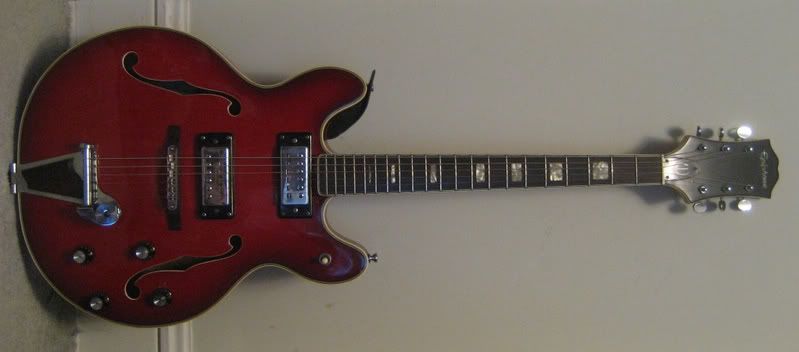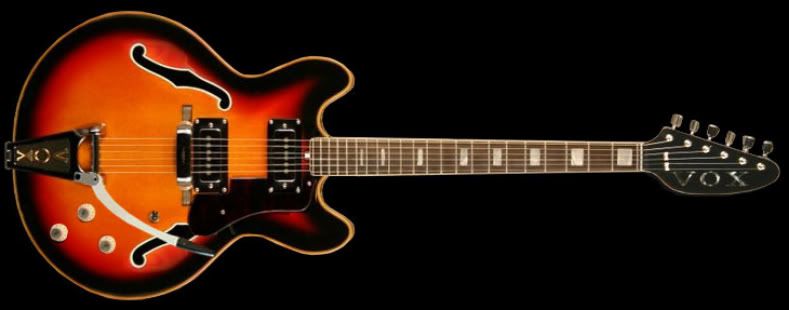It is labeled: Mansfield on the headstock, but had many traits of a Japanese maker. A little internet research told me that Mansfield was a label branded for Peate Music in Canada in the 1970's. I was able to contact Rick Peate who told me the bass appears in the 1975 Peate Catalog, so it was an early/mid 70's model. He believed it was made by the company that later evolved into Ibanez.
Even a quick look at he guitar lets you know that something strange is going on. It has a Tele shape body, but is a bass. A 30" scale bass to be exact.
It has two nice, bright sounding pickups, each with an on/off switch, as well as maser tone and volume controls. The bridge looks much like a Fender bridge, with a very nice chrome cover. The body has a rather lame attempt at a sunburst finish, with only a few hairline check marks.
When I got it, it was dirty as all hell, and I completely stripped it down. The fretboard took some time to clean and oil, the frets needed polishing badly, and everything else had that old sticky grunge of years of cigarette smoke and dirt. In the end, the bass polished up very nicely. Once the truss rod was properly adjusted, the bass was a good player as well., with a nice bright tone.
As neat as this bass was, it readily became apparent why Leo Fender did not simply slap a bass neck on a Telecaster body: neck dive. Yep, even with the short 30" scale neck, with no top horn the bass is unbalanced and you have to literally hold the neck up in the air as you play. This can get very tiring very quickly.
But, for $65, I really could not complain. It was neato, and ¢heapo.











